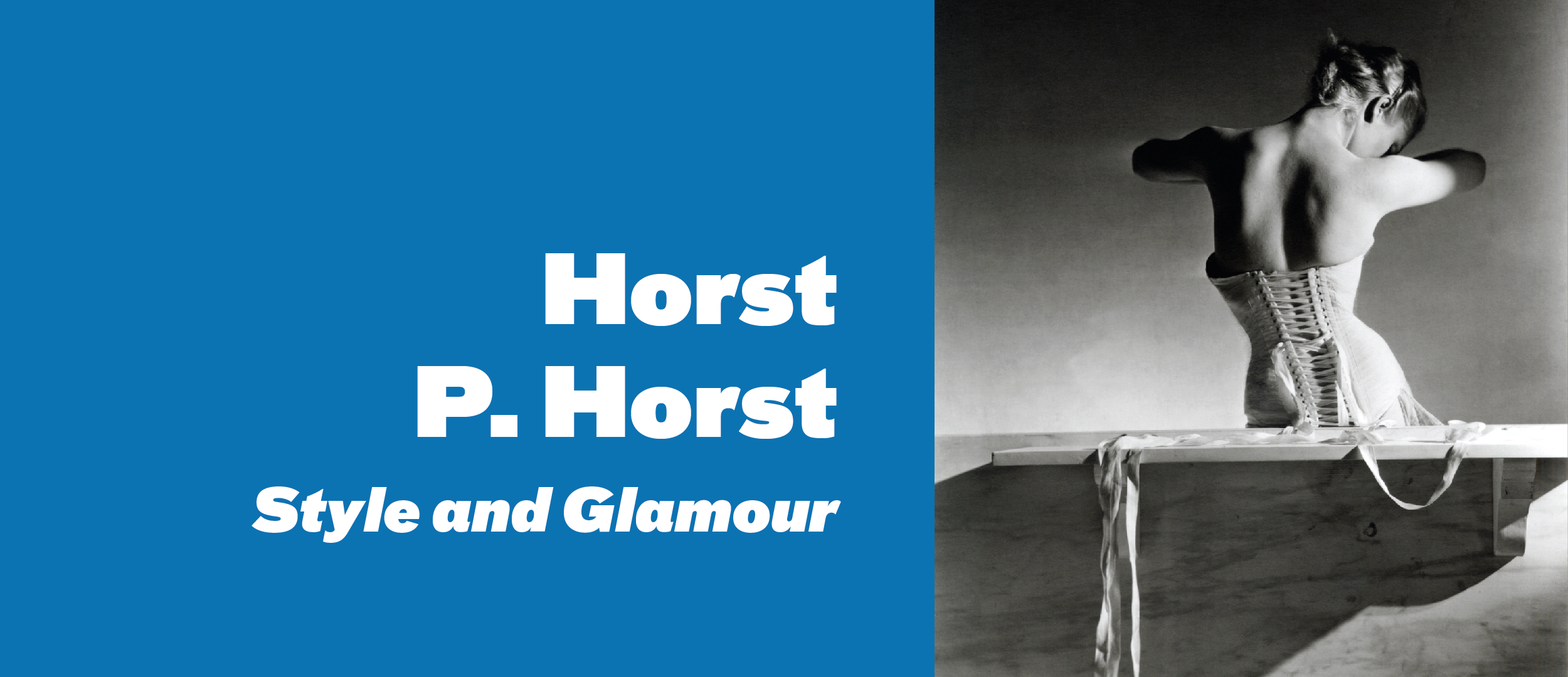Horst P. Horst. Style and Glamour
24 March - 18 July 2021

The itinerary of the exhibition, curated by Giangavino Pazzola, is chronological. With a selection of over 150 works in various formats, it takes into account Horst’s main creative periods, retracing his career through the fundamental junctures of his evolution, from his beginnings to his most recent works.
The different sections are organised in such a way as to emphasise certain salient points of Horst’s artistic production: the link with classical art which, however, does not exclude the influence of the vanguards; the visual investigation of the harmony and elegance of the human figure enhanced by his perfect mastery of set lighting; the profitable and lasting collaboration with Vogue, a magazine for which the photographer put his name to dozens of front covers; the portraits of personalities from the world of fashion and art, often set in their own homes, images through which the author once again reveals his indisputable compositional skills.
The first section serves as an introduction to the artist and his research interests: the relationship between nature and culture, the set portrait and the great attention to detail, elements that can be seen both in the photographs in which he captures the intellectual milieu of Paris in the 1930s, in his self-portraits and still lifes. In the second section, space is given over to works produced during his Parisian and New York phases: very prolific periods influenced by Romanticism and Surrealism, during which he produced iconic images such as Mainbocher Corset, Paris, 1939, and Hand, Hands, New York, 1941. The use of colour in fashion photography is the subject that opens the section featuring his most famous covers of Vogue. The section also includes the striking interior images taken from the 1940s onwards, which soon became one of the photographer’s main occupations, partly thanks to the interest of Diana Vreeland (editor of Vogue from 1962), who commissioned Horst to produce a series of reports on the homes and gardens of artists and celebrities. Among the many he produced, there is a focus on Italy, with the Roman flat of the artist Cy Twombly, adorned with his own works and classical sculptures, and the timeless charm of the Villar Perosa estate, where a very elegant Marella Agnelli poses.
Completing the exhibition – which couples the artist’s best-known oeuvre with a series of surprising previously unpublished works – are images from the renowned series Round the Clock, New York, 1987: featuring the ultimate synthesis of the radicalism, talent and vision of one of the leading figures in 20th-century photography. The exhibition is held thanks to the collaboration of the Horst P. Horst Estate and the Paci contemporary gallery in Brescia.
Horst P. Horst (Weißenfels, 1906 – Palm Beach, 1999)
Horst Paul Albert Bohrmann was born in 1906 in Weißenfels. He grew up in contact with the Bauhaus artists and, after studying design in Hamburg, left Germany and moved to Paris. In the French capital, he briefly became Le Corbusier’s assistant, and frequented the lively Parisian artistic environment. He also met George Hoyningen-Huene, one of the most important fashion photographers at the time. As a good mentor, he first introduced him to the secrets of photography and, in 1931, also introduced him to Cecil Beaton, then art director of Vogue, who in turn hired him as photographer for the French edition. In 1937 he moved to New York to work on the American edition of the magazine but, after a disagreement with the publisher Condé Nast, Horst returned to Paris well before his contract expired. Back in Europe, he again worked for the French edition of the magazine, continuing to publish there until the outbreak of WWII. During these years, he became acquainted with intellectuals and artists such as Cocteau, Bérard and Dalí, with whom he collaborated to create some of his most famous shots, with a strong surrealist influence. In 1939, he took his most famous photograph: Mainbocher Corset. Immediately afterwards, he fled Europe and returned to the United States, where he settled permanently. In 1943 he obtained American citizenship, abandoning his German name for good and adopting the more international Horst P. Horst. In the same year he was drafted into the army, but managed to avoid the battlefield by working as a photographer. At the end of the war, he moved away from fashion and devoted himself more to advertising, returning to work for Vogue in the 1960s and House & Garden in the following decade, where he photographed the homes of international high society and celebrities. His work soon began to be shown in exhibitions all over the world, and his name became one of the great masters of 20th-century photography. Horst P. Horst died in 1999 at his home in Palm Beach.